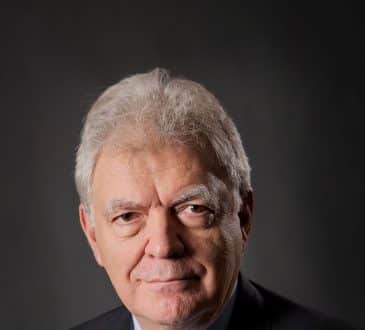Leading On Purpose

Two years ago, I wrote a CEOWORLD Magazine article titled A Metaphor for Healthy Growth, featuring what I called The Peernovation Tree. As I wrote in the piece, “I love the metaphor because trees are not only alive; they give us life.” They contribute much more than the shade delivered by the most magnificent Sequoia or a beautiful stand of Aspens, which also share nutrition and protect each other from the elements.
Today, I’d like to talk about the power of creating a purpose statement for peer advisory groups (and teams) and how it inspires peer-to-peer excellence. Drafting such a statement, at least as I would lead it, starts with identifying the values and behaviors that define what you care about and who you want to be. They bring clarity to what you expect of yourself, your leader, your peers, and any new person who seeks to enjoy the privilege of being a valued member of your ensemble.
Like the roots of a tree, values feed your soul and evolve as you grow. The more we acknowledge that it’s our values that keep us living our best life, the more intentional we will be about keeping them front and center in everything we do. Since our values inform our purpose, they clarify WHY we do what we do. It’s the trunk of your tree. Solid and unyielding.
Further up the trunk is your mission. It’s not WHY you do what you do; instead, it defines HOW you will uniquely go about it based on your values, purpose, talents, and aspirations. Let’s look at how values, behaviors, and mission play into defining your WHY.
Drafting Your Purpose Statement
Drafting a purpose statement is essential to establishing a cohesive and high-performing environment for a group or team. A well-defined purpose statement aligns the group’s efforts and inspires a sense of belonging. Don’t draft one to go through the exercise. Think of a purpose statement as the guiding light that steers your group members through all their challenges and opportunities – a statement that will actively guide every engagement.
Here’s a structured approach to crafting an effective purpose statement.
- Identify Your Core Values and Behaviors
As I mentioned, before embarking on the journey of writing a purpose statement, it’s crucial to identify the core values of the group and the behaviors that describe what they will look like in action. Begin by engaging members in discussions or workshops where they can voice the principles that resonate with them as a group. Capture all of their ideas for all to see. - Pinpoint the Group’s Unique Identity
Every group has unique attributes, strengths, priorities, and preferences for operating. Highlight what distinguishes your group from others. Is it creativity, resilience, innovation, compassion…? This characteristic should be embedded within your purpose statement, celebrating what makes your group one-of-a-kind. - Define a Clear Mission
Your mission should lay out the primary aspiration of the group. It could focus on driving innovation, fostering collaboration, or uplifting communities. Writing down clear objectives helps with prioritizing activities and directing efforts towards fulfilling the group’s mission – it’s HOW you will go about achieving your WHY. - Engage and Collaborate with the Group
The process of crafting a purpose statement should be collaborative, drawing insights from every group member. An inclusive approach ensures that the statement reflects collective aspirations and fosters a sense of ownership among all members. Conduct brainstorming sessions and engage in conversations that capture diverse perspectives. - Keep It Concise and Impactful
Simplicity is essential, as your words must be memorable and impactful. Your purpose statement should be succinct, usually not exceeding two sentences. Yet, it should be potent enough to encapsulate the essence of your group’s mission. Use clear, straightforward language that resonates with everyone. - Test and Refine
Once you’ve agreed on a draft, let it rest and revisit it at your next group meeting. Be open to refining the words until they capture your intent as precisely as possible. Remember that fine-tuning is all about honing for clarity and engagement. - Live the Purpose Statement
After finalizing the purpose statement, it must become an ongoing part of your group’s culture. Consider starting and ending every meeting with it. Begin a meeting by reading it aloud and reminding everyone that it’s time to buckle up and bring your A-Game. End the meeting by reading the statement and asking: How could we have been stronger today? How do we need to improve for next time? Begin the next meeting by reading the statement and reminding the members of how they can be better – as they articulated it for themselves at the last meeting. Living the purpose statement is dynamic, requiring consistent reflection and alignment. - Allow for Evolution
A purpose statement is not static—it can evolve as it grows and its goals shift. Periodically revisit the statement to ensure it remains relevant and inspiring. Being open to evolution rather than viewing it as a rigid declaration ensures that the purpose statement grows with the group.
Drafting a purpose statement is not just an exercise in wordsmithing; it’s a strategic activity that solidifies group identity, galvanizes collective energy, sets high standards of excellence, and charts your course for the future. By embracing these steps, peer groups (and company teams) can formulate a purpose statement that inspires passion, fosters collaboration, and propels them toward success.
Best of all, it will make the collective as strong as an oak. It’s why leading on purpose matters.
Written by Leo Bottary.
Have you read?
Richest Countries In Europe In 2024.
Most Attractive Countries To Private Equity, Venture Capital, and Hedge Fund Investors.
Revealed: Highest-paid news media executive in the United Kingdom.
Countries Leading the Way on Climate Change.
World’s Best Countries For Adventure Tourism.
Bring the best of the CEOWORLD magazine's global journalism to audiences in the United States and around the world. - Add CEOWORLD magazine to your Google News feed.
Follow CEOWORLD magazine headlines on: Google News, LinkedIn, Twitter, and Facebook.
Copyright 2025 The CEOWORLD magazine. All rights reserved. This material (and any extract from it) must not be copied, redistributed or placed on any website, without CEOWORLD magazine' prior written consent. For media queries, please contact: info@ceoworld.biz








